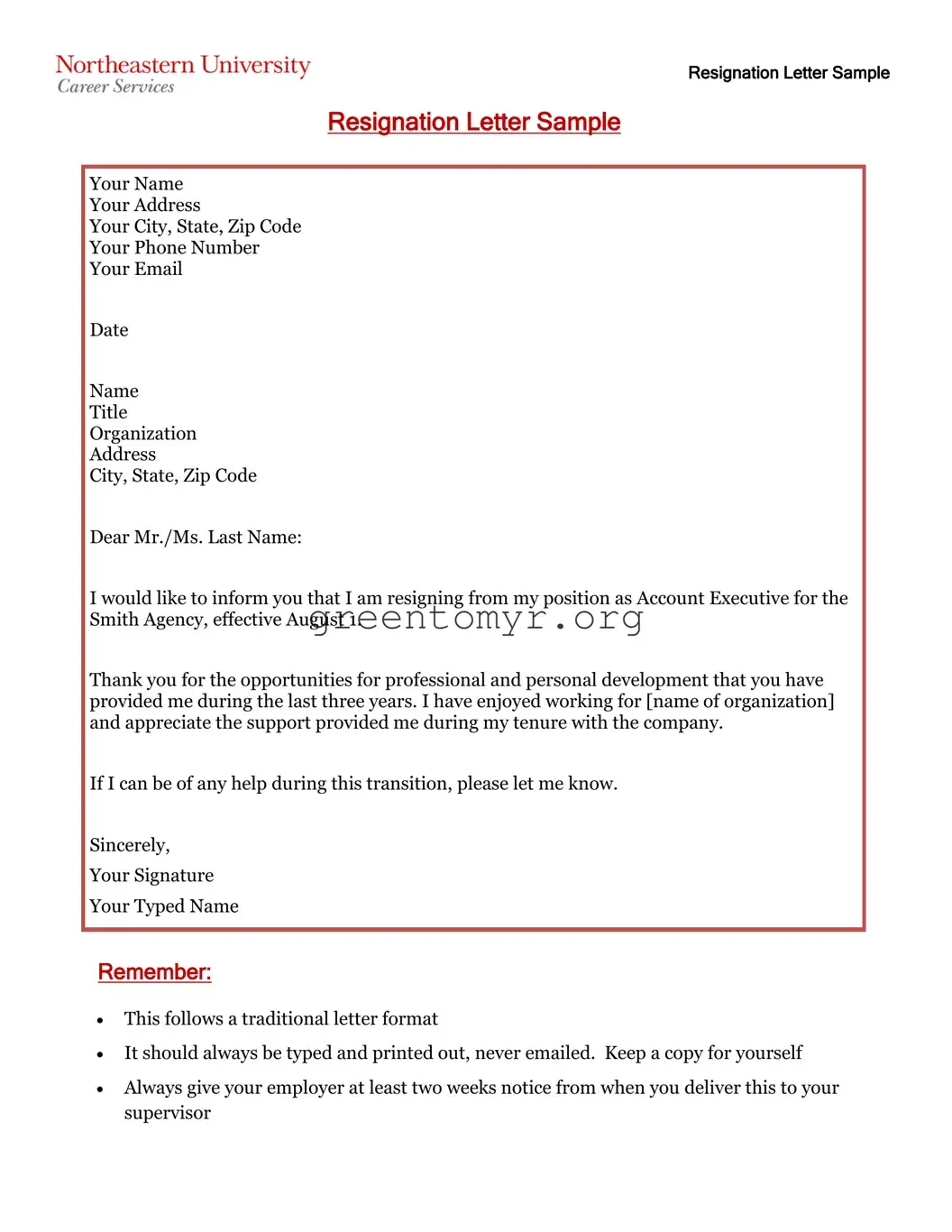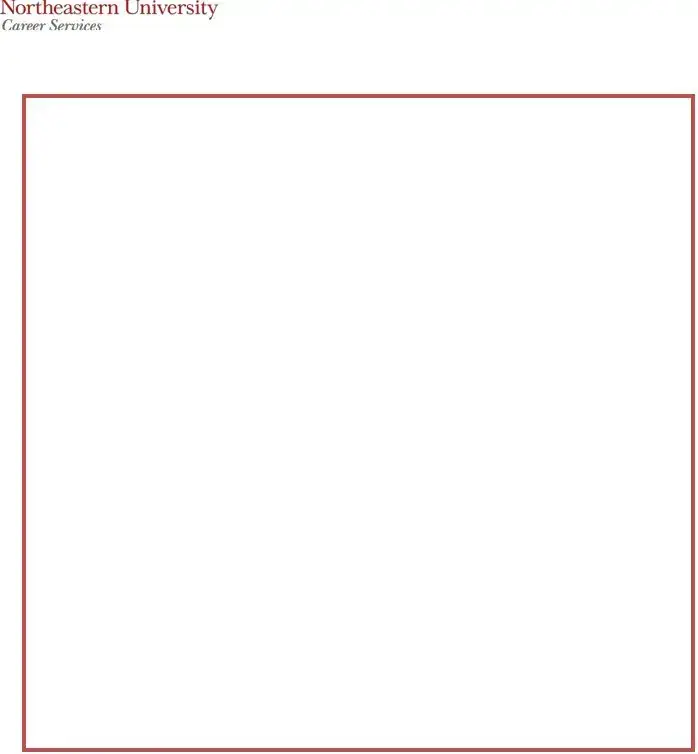Resignation Letter Sample
Resignation Letter Sample
Your Name
Your Address
Your City, State, Zip Code
Your Phone Number
Your Email
Date
Name
Title
Organization
Address
City, State, Zip Code
Dear Mr./Ms. Last Name:
I would like to inform you that I am resigning from my position as Account Executive for the Smith Agency, effective August 1.
Thank you for the opportunities for professional and personal development that you have provided me during the last three years. I have enjoyed working for [name of organization] and appreciate the support provided me during my tenure with the company.
If I can be of any help during this transition, please let me know.
Sincerely,
Your Signature
Your Typed Name
Remember:
This follows a traditional letter format
It should always be typed and printed out, never emailed. Keep a copy for yourself
Always give your employer at least two weeks notice from when you deliver this to your supervisor

